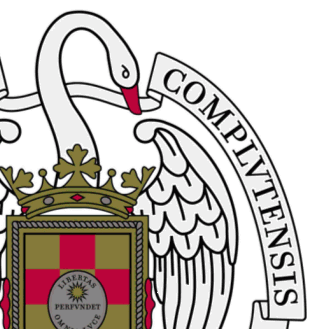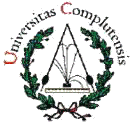
Universidad
Complutense
Madrid
GEOPHYSICS AND METEOROLOGY



Universidad Complutense Madrid |
DEPARTMENT
OF
PHYSICS OF THE EARTH, ASTRONOMY AND ASTROPHYSICS: GEOPHYSICS AND METEOROLOGY  |
 |
|
group of
PALAEOMAGNETISM |
SCHA.DI.00-F model Regional Archaeomagnetic Model for Europe for the last 2000 years. Authors: Pavón-Carrasco, Fco. Javier (fjpavon@fis.ucm.es) Dpto.
Física de la Tierra:
Geofísica y Meteorlogía.
Osete, Maria
LuisaUniversidad Complutense de Madrid. 28040. Madrid. Spain. Universidad Complutense de
Madrid.
28040. Madrid. Spain.
Torta, J.
MiquelGaya-Piqué, Luis R. Equipe de
Géomagnétisme,
Institut de Physique du Globe de
Paris, CNRS;
Tour 14, 2 place Jussieu, 75005 Paris, France. Pure and
Applied Geophysics - 2008
Vol. 165, p. 1209 - 1225 Abstract: The SCHA.DI.00 directional model for the geomagnetic field in Europe for the last 2000 years (PAVo´N–CARRASCO et al., 2008) has been updated by modelling the palaeointensity. This model, SCHA.DI.00, was developed from available Bayesian European Palaeosecular Variation Curves using the regional Spherical Cap Harmonic Analysis technique. The comparison of the palaeosecular variation curves, given by the regional model, with available archaeomagnetic data not used in its development showed an improvement with respect to the fit obtained by global archaeomagnetic models. In this paper advantage is taken of recently published palaeointensity databases to develop a complete (direction and intensity) regional archaeomagnetic model for the last 2000 years valid for the European region: the SCHA.DI.00–F model. Not only does this complete model provide an improvement for example for archaeomagnetic data studies, but it is also shown that this new regional model can be used to study the recently proposed link between the centennial secular variation of the geomagnetic field and climate change. The pattern of the archaeosecular variation of the field intensity obtained by SCHA.DI.00–F seems to verify the hypothesis presented by GALLET et al. (2005) about a possible (causal) connection between changes in the geomagnetic field intensity and in climate parameters, opening the door for more discussions on this challenging subject. |